Jon Stewart Strikes Back at Krugman
This proves better than anything that Krugman can’t think two moves ahead. You don’t get huffy with Jon Stewart.
Now do you guys agree I have been right to love Jon Stewart lo these many years?
Potpourri
==> John Goodman (the economist, not the actor) cites two Murphys at Forbes.
==> Apparently Nate Silver could’ve saved me $500.
==> Speaking of the Henderson/DeLong/Krugman fiasco, here was Jeff Tucker’s reaction.
==> David Beckworth (and Ramesh Ponnuru) are half right: The government should cut spending. I get really worried when people say “Bernanke Controls the Economy’s Fate,” in this sense.
==> Some funny examples of Obama supporters being stunned by their 2013 paychecks. (I think I saw this from Danny Sanchez.)
==> I was reading and enjoying this Matt Zwolinski discussion of “left libertarianism,” but when he praised my takedown of Kevin Carson’s labor theory of value, I knew this rose to the level of a Potpourri link.
==> My interview with Bob Wenzel. We laugh, we cry. Seriously, I think there are some anecdotes in here that you’ve never heard before, including my awful impression of Israel Kirzner.
A Foreign Scholar Goes to the Barricades for Liberty
Hasting Chen has decided to translate my introductory textbook, Lessons for the Young Economist, into Chinese. He shared with me a memo he sent to his team, which I reproduce with permission:
Although this project falls largely on my shoulder, as a piece of encouragement, though, I would like to disclose my thoughts of the project. Therefore, let us say, my dear friends, what we engage today for this book is one of the greatest undertakings in publication history, perhaps the single greatest as we know it. That is because we try to achieve two things. FIrst, we are trying to revolutionize the whole scene of unsound economic thinking, authoritarian policymaking philosophy, and as a result, the focus of today’s febrile mainstream media. Second, we attempt to achieve this aim by using a language that anyone who have eyes to read may understand. To achieve either would be an enormous challenge in itself; to achieve both would certainly be one enterprise of historic proportions. As a result, I want to stress again that it is my distinctive honor to find some of the brightest minds in our intellectual horizons for this task. As a result, do not feel frustrated by some of the difficulties you probably encounter for the task (and perhaps for my stern attitude towards your work as well), because it is exactly with these difficulties we recognize the importance for this task. And we will surmount these difficulties with our care. It is exactly such painstaking (or even fanatical) care “to do it right” that achieves great things in human civilizations. I have my full confidence in you, my ladies and gentlemen, that if we do our duty we will achieve something of similar magnitude.
Finally, to sum up all this and to show my earnest thanks for you, let me conclude this email with a poem for you, which I came up with some days ago
In this darkest hour,
This book, like an arrow blazing through the sky,
Shall carry my resolve through
bland hubbub and wild confusion,
Illuminating the people by its wake
For prosperity and posterity.
Yet for their admiration,
It is you, my mighty archers,
Who powered its flight.
Peter’s Mistakes Were Connected
My pastors are covering the gospel of Luke. In Lk 22: 39-51 we read:
The Prayer in the Garden
39 Coming out, He went to the Mount of Olives, as He was accustomed, and His disciples also followed Him. 40 When He came to the place, He said to them, “Pray that you may not enter into temptation.”
41 And He was withdrawn from them about a stone’s throw, and He knelt down and prayed, 42 saying, “Father, if it is Your will, take this cup away from Me; nevertheless not My will, but Yours, be done.” 43 Then an angel appeared to Him from heaven, strengthening Him. 44 And being in agony, He prayed more earnestly. Then His sweat became like great drops of blood falling down to the ground.[a]
45 When He rose up from prayer, and had come to His disciples, He found them sleeping from sorrow. 46 Then He said to them, “Why do you sleep? Rise and pray, lest you enter into temptation.”
Betrayal and Arrest in Gethsemane
47 And while He was still speaking, behold, a multitude; and he who was called Judas, one of the twelve, went before them and drew near to Jesus to kiss Him. 48 But Jesus said to him, “Judas, are you betraying the Son of Man with a kiss?”
49 When those around Him saw what was going to happen, they said to Him, “Lord, shall we strike with the sword?” 50 And one of them struck the servant of the high priest and cut off his right ear.
51 But Jesus answered and said, “Permit even this.” And He touched his ear and healed him.
(From elsewhere we know it was actually Peter who cut off the slave’s ear.)
I’ve read and heard many things in relation to the above events, but my pastor said something new to my ears: Peter’s two mistakes here are related. Precisely because he was dozing, rather than meditating on the upcoming confrontation, he was startled and rash when the mob came. In contrast, Jesus was calm and collected.
My pastor went on to point out that in this scene, when the armed mob is expecting a fight and Peter just cuts off one of their guy’s ears, things were probably pretty dicey. And yet Jesus just instantly defused the whole situation. When He said to back down, everybody listened, not just His immediate disciples.
Even in the midst of His arrest in the darkness of night, as He was enduring the worst betrayal in human history, Jesus was in complete command.
Why Wages–>Labor Is NOT Like Interest–>Physical Capital
My last post on this topic was a bit technical, so let me break it down a bit. This post will still probably only appeal to actual economists, whether professional or amateur, because these issues get so nuanced. But I will try to keep the discussion in plain English.
The claim I want to establish is that it is bad economics to walk around thinking that “wages are to labor, as interest is to (physical) capital.” Because of certain modeling conventions in mainstream economics, most economists think this statement is true, but they’re wrong.
Before diving in, let me be clear that throughout this post, I’m talking about real wages and the real rate of interest, as defined in terms of consumption goods. So you pick a basket of consumption goods, and then define the real wage rate as how many such baskets a worker can afford to buy, after selling a time-unit (an hour, say) of his labor. The (gross) real interest rate measures how many baskets of consumption goods in one year you can buy by selling one basket of consumption goods today, and the net real interest rate is just the gross rate minus one.
==> First of all, without workers, there can be no wages, period. So that’s a pretty good reason to think they are intimately related concepts. Yet without physical capital goods, you can still have interest. For example, if there’s an island with coconut trees and no production at all (we’re just harvesting nature’s gifts), people can still say, “Hey, I’ll give you 11 of my coconuts next year, if you let me have 10 of your coconuts right now.” If coconuts are the only consumption good, then the real interest rate is 10%, even though there’s no such thing as “the marginal product of capital” in this scenario.
==> Now the defender of the orthodox treatment might say, “OK sure, in a world without capital goods, you’d still have interest. But all we’re saying is, when you do have capital goods–and where there’s a choice between using the capital to produce consumption goods versus more capital goods–then in equilibrium, the physical ability of the capital good to reproduce itself ends up equaling the real rate of interest measured in consumption goods. For example, suppose there’s only one good, sheep, and you can either consume 1 sheep today, or let it reproduce and turn into 2 sheep next year. This clearly pins down the equilibrium real interest rate at 100%, and this is because of the physical facts concerning the production of sheep.”
==> The above retort is correct, as far as it goes, but I think 99% of professional economists would not see how the rabbit got into the hat. It wasn’t a harmless, simplifying assumption to assume that the same good (sheep) served as consumption and capital good; that was a critical move that guaranteed the result.
==> To see why, consider a slightly more general scenario, where I can use 1 machine today to produce 1 unit of food today, or to produce 2 machines in one year. (In other words, it takes the machine 12 months to make a physical copy of itself. Furthermore, the machines are perfectly durable physically; the owner just performs routine maintenance on them to keep them indefinitely usable.) Now most economists would probably think, “Well, in this case the physical facts pin down the equilibrium real interest rate at 100%. The machine today can produce either 1 unit of food today, or two machines next year, which at that time have the option of producing 2 units of food. So it must be that 1 unit of food today trades for 2 units of food next year, for a 100% real rate of interest.”
==> Not so fast. We are leaving out the fact that the machine can be sold for food on the spot market. I didn’t tell you in the above reasoning what the food-price of a machine was in period 1 versus period 2. Suppose in period 1, the machine could have been sold for 100 units of food, but in period 2, each machine fetches only 49.5 units of food. That means the guy in period 1 can use his machine to produce 1 unit of food and then sell it for 100 more units, for a total of 101 units of food. Or, he can use his machine to produce two machines next period, when he can use them to produce 1 unit of food each, and then sell them both for 49.5 each. This gives him a total of 101 units of food in period 2. Thus the equilibrium interest rate must be 0%, because the owner has to be indifferent between producing 101 units of food in period 1 versus 101 units of food in period 2.
==> The above example shows that when there is a distinct capital and consumption good, you can’t derive the equilibrium real interest rate just by thinking about physical production. You also have to worry about the spot market price of the capital good, measured in terms of the consumption good. If it’s the same forever, then this subtlety falls away. This automatically has to happen in a one-good economy, which is why those models are awful ways to think about capital & interest theory. It can happen too in a “steady state” of a model with distinct capital and consumption goods. But notice that it is a lot more restrictive than mere equilibrium; it has to lock in the real prices of all the capital goods, forever.
==> If people still think “meh” about the above, consider this: I can come up with a model involving robots where, in a steady-state equilibrium, it must be the case that the real rate of interest equals the marginal product of labor. But surely we can agree it would be crazy for me to walk around thinking, “Interest has to do with the marginal product of labor.” Well, the exact same reasoning applies to people thinking, “Interest has to do with the marginal product of capital.”
Scary Scott Sumner Statements
At this point I think my analysis is superfluous. I just need to quote this guy. If you folks don’t see what I see, I don’t know what my commentary will add. These quotes all come from the same post:
==> “So it’s print money now or print money later. If you really, really don’t want to see a lot of money printing, negative [interest on excess reserves] might help, but higher trend inflation is the only real alternative.”
==> “Notice how my favorite economies all end up with governments owning lots of foreign equities? It goes against Switzerland’s conservative ideology. But as I’ve argued many times, a bit of socialism might be the price you pay for a conservative monetary policy.”
==> “[I]in the long run a strategy of borrowing money from Europeans at zero interest rates and investing in Asian equity markets would be expected to yield a positive rate of return, if only due to the Balassa-Samuelson effect.”
While I Was Bogged Down With Keynesians, Sumner Solidifies His Power Grab
Oh man, have you kids been checking in with Scott Sumner lately?
==> Famous monetary economist Frederic Mishkin has now been seduced by the Dark Side.
==> Sumner thinks the trillion dollar coin is bad for the Democrats politically, but if Obama “ignores my advice and mints the coin anyway, I’ll strongly support the move since…it will be a sunk cost and I’ll try to minimize the damage by convincing the public that it’s better than default.”
==> You think maybe we should just give Scott’s ideas a trial run, maybe for two years, and then try something else if they don’t work out so hot? Well in a post with the ominous title “There’s no going back” Scott writes:
Once we shift to NGDPLT, there won’t be any going back, because NGDPLT is far superior to inflation targeting. Whenever inflation and NGDP diverge sharply, the Fed will be under tremendous pressure to target NGDP, not inflation. For instance, if inflation rises to 2.8% due to an oil shock, and output growth falls from 2.5% to zero, the Fed will cut rates, not raise them as inflation targeting would imply. Eventually central banks will stop paying attention to inflation.
So, if you are against the central bank buying a trillion dollar coin from the government so it can evade limits on its ability to issue more public debt, and/or if you think the central bank ought to pay very close attention to (price) inflation, then you can understand why Sumner must be stopped…no matter the cost.
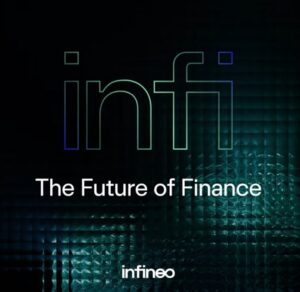
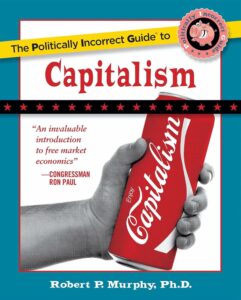
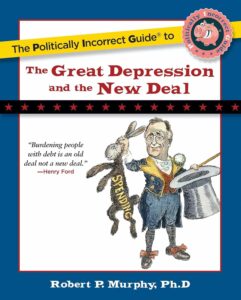
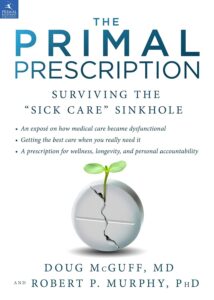


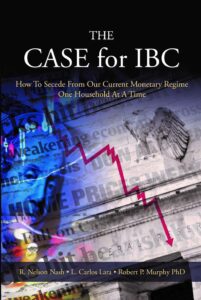
Recent Comments